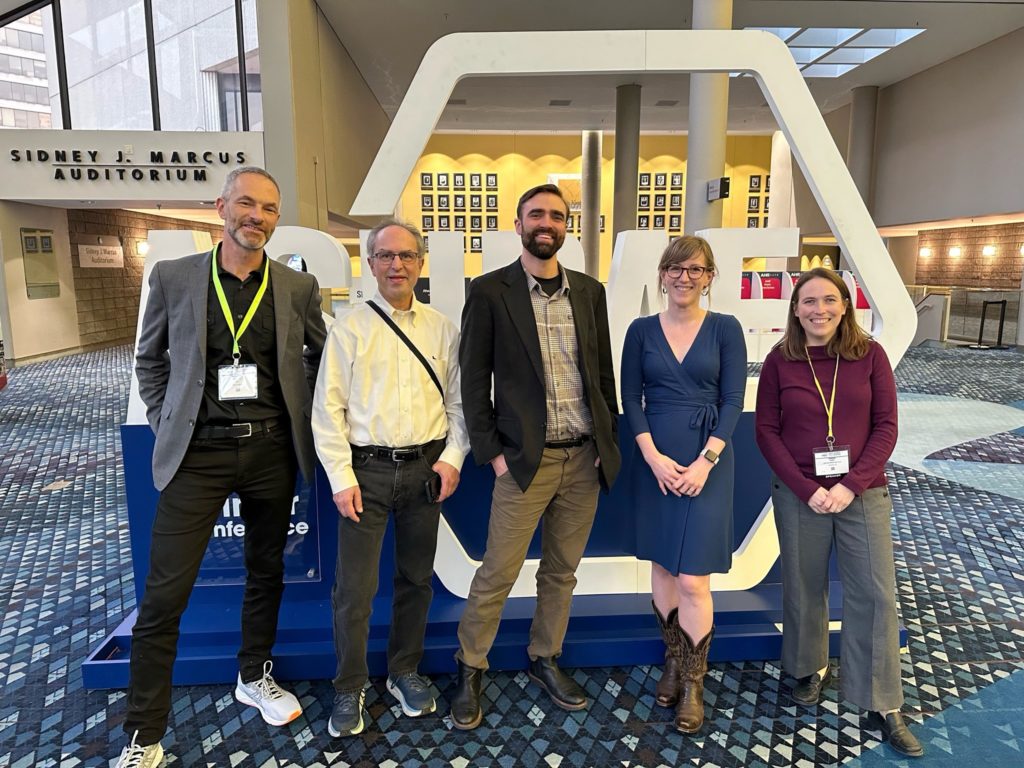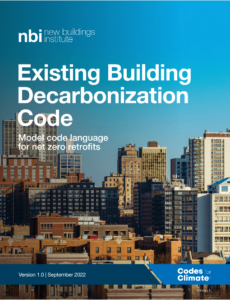ASHRAE, along with 24 of the world’s leading building industry organizations, issued a statement a few months ago to government representatives attending the United Nations Climate Change Conference of the Parties (COP 27) pledging to assume a leadership role in decarbonization efforts in the built environment. A global professional society of 50,000 people, ASHRAE is an influential organization with the power and expertise to ensure the building industry, which is responsible for roughly 40% of the world’s GHG emissions, is part of the climate solution.
At its 2023 winter conference in Atlanta, ASHRAE demonstrated its leadership by introducing a workplan to get ASHRAE Standard 90.1 to zero emissions by 2031. With Standard 90.1 serving as the compliance standard for energy codes in 38 states, this sends a strong message to the building industry.
“Our industry is one of the most significant contributors to human-made carbon emissions,” said Kent Peterson, ASHRAE Presidential Member and ASHRAE Task Force for Building Decarbonization chair, in an online video posted on the organization’s new web-based resource dedicated to building decarbonization. “If the last decade was a time for commitments, this decade is a time for action. We are seeing governments and private entities acting or wanting to act. And they are all looking at their building portfolios.”

If there was one clear takeaway from the most recent ASHRAE conference, and among NBI staff serving on various ASHRAE committees, it is this: there is more momentum than ever before to accelerate building decarbonization. And, with the Inflation Reduction Act (IRA) allocating billions in state and local government grants and loans aimed at increasing adoption of the latest energy codes and a zero-energy code, the next few years could have major impacts on climate, public health, resilience, and social equity.
Taking a more holistic approach to building design
More than 130 countries have committed to being carbon neutral by 2050. The U.S. federal government has pledged a net zero emissions federal building portfolio by 2045. And investors are putting increasing pressure on business leaders to make progress toward climate goals. Given its influence over operational energy use in residential, multifamily, and commercial buildings, ASHRAE and its members are on the frontlines of helping public and private entities meet their energy and climate goals. And that means thinking well beyond energy efficiency.
In June 2022, ASHRAE’s board of directors published a Position Document on Building Decarbonization recognizing the need to consider a building’s life-cycle carbon impact. The list of design considerations for reaching zero emissions included in the position document includes minimizing embodied carbon in new construction materials, using energy-efficient electrification of space and water heating, using low-GWP refrigerants, and using grid-integrated control systems to optimize building energy storage and increase demand flexibility.
“People within ASHRAE are taking a more holistic view of what it takes to decarbonize buildings, which is absolutely necessary,” said Alexi Miller, NBI’s acting director of Building Innovation. “In Atlanta, we heard considerably more discussion of building-related design and operation strategies that touch on all five foundations of building decarbonization.”
Miller, and his NBI colleagues Kevin Carbonnier and Mischa Egolf, are lead authors of one of seven technical guides developed by ASHRAE’s Task Force for Building Decarbonization aimed at addressing the challenge of decarbonizing the building stock. His group is authoring a technical guide focused on the design and operation of grid-integrated buildings for decarbonization, building from NBI’s research, in partnership with the U.S. Green Building Council to learn and share how buildings can accelerate the decarbonization of the electricity grid while cutting costs and improving resilience.
Existing buildings receive much-deserved attention
At the winter conference, ASHRAE officially released Building Performance Standards (BPS): A Technical Resource Guide, the first of the seven technical guides. The guide is aimed at the growing number of cities and states considering adopting policies that address energy performance and emissions of existing commercial and multifamily buildings—which number 5.9 million in the U.S.
Unlike construction and energy codes, which only affect buildings at distinct events in their life cycle, such as new construction or major renovation, Building Performance Standards (BPS) aim to regulate and reduce the climate impact of existing buildings by establishing increasingly stringent targets that require buildings to improve operating energy performance and emissions throughout their lifetimes.
Kim Cheslak, NBI’s Director of Codes, was a lead contributor to the BPS Technical Resource Guide. She also served as the lead author of NBI’s Building Decarbonization Code (and later the Existing Building Decarbonization Code) overlay, a first-of-its kind resource for jurisdictions to meet climate, public health, and equity goals.
“For example, transitioning from traditional fossil fuel-based equipment to efficient heat pumps can be technically challenging and require up-front capital,” Cheslak said. “But the policy and market momentum towards heat pumps is sending a strong signal to the market, including manufacturers, designers, developers, and owners, which will speed up innovation and adoption.”
Economic incentives accelerate progress
With nearly $370 billion to advance decarbonization, the IRA includes numerous provisions that will drive performance improvements in buildings. In addition to $1 billion for energy code updates, the IRA provides significant rebates and expands tax deductions for energy-efficiency improvements in both residential and commercial buildings and includes tax incentives for products such as energy efficient windows and heat pumps. At the ASHRAE conference expo (which is the largest expo of its kind at approximately 500,000 square feet featuring more than 1,700 vendors) efficiency, decarbonization, and especially heat pumps took center stage.
Now it’s time to get to work
According to Jim Edelson, NBI’s senior climate advisor and a member of the committee that drafted ASHRAE’s Building Decarbonization Position Document, “With ASHRAE’s pending workplan for Standard 90.1 to deliver a net-zero carbon standard in the 2031 version, coupled with the industry’s momentum towards efficient heat pumps in the marketplace now supported by the IRA, ASHRAE is poised meet the commitment to advancing standards laid out in its position document. People around the globe will be watching to ensure ASHRAE’s progress toward this goal continues well into the next decade.”
NBI was founded to support the advancement of national model energy codes, including ASHRAE 90.1. Now, more than 25 years later, it is very encouraging to see such a well-respected, influential organization and its membership make a strong commitment to getting to zero and make a significant contribution to solving the climate crisis.
by Ralph DiNola, CEO, New Buildings Institute
Did you enjoy this content? Consider supporting NBI’s work with a donation today.
